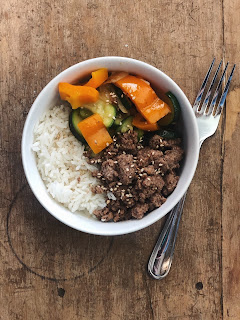Food Safety During Flooding
Food Safety during Flooding
This
past week has been an eye opener for many of us. As a relatively new member of
the community, I have been blown away how the Flood of 2019 has brought so many
together. The images that have been captured of community members working side
by side filling and hauling sandbags are the epitome of what small town
Nebraska communities are all about. With flooding, power outages, closed roads,
food safety is vitally important. Here are some basic food safety practices issued
by the Academy of Nutrition and Dietetics to put into place during or after
flood situations.
- Do not eat any food that has come into contact with flood water and if in doubt, throw it away. Many times the flood water has passed through livestock facilities and sewage. This also includes any food in plastic or paper containers that has also come in contact with water. It is even recommended to discard any twist cap, lip top, or home canned foods that have come in contact with water because they will not be able to be disinfected. Again…when in doubt, throw it out.
- If you have some undamaged, all metal cans that have been in contact with flood water – they can be consumed after removing the label and disinfecting then sanitizing the cans prior to consumption.
- If safe drinking water is lacking or limited, there is ways to purify water to make it drinkable. Boiling water is the best way to purify water because when it reaches 212 degrees it will kill most organisms. After boiling, let it cool and then store in clean, sanitized containers with lids.
- If flood waters have reached any food preparation surfaces or equipment, proper methods to sterilize and sanitize must be taken. Any wooden products like spoons or cutting boards must be discarded because they will not be able to be cleaned properly. Thoroughly wash metal pans and ceramic dishes with soap and hot water before sterilizing in a sanitizing solution.
- If the power goes out during a flood situation, make sure to keep the doors of the refrigerator and the freezer as long as possible to maintain residual coldness. Once power gets back on check the temperature inside the freezer and if reads 40 degrees or below, the food is safe to be re-frozen. Refrigerated foods will be safe as long as power was not out for longer than 4 hours. And again, if in doubt – throw it out.
If you would like more information about food safety in times
of emergency, go to foodsafety.gov/keep/emergency
Although our state has seen the worst of the worst this past
week, our Husker fight song says it best in that we will all stick together in
all sorts of weather.
Resources: https://www.eatright.org/homefoodsafety/safety-tips/food-poisoning/food-safety-in-the-home-after-a-hurricane-and-flooding


Comments
Post a Comment